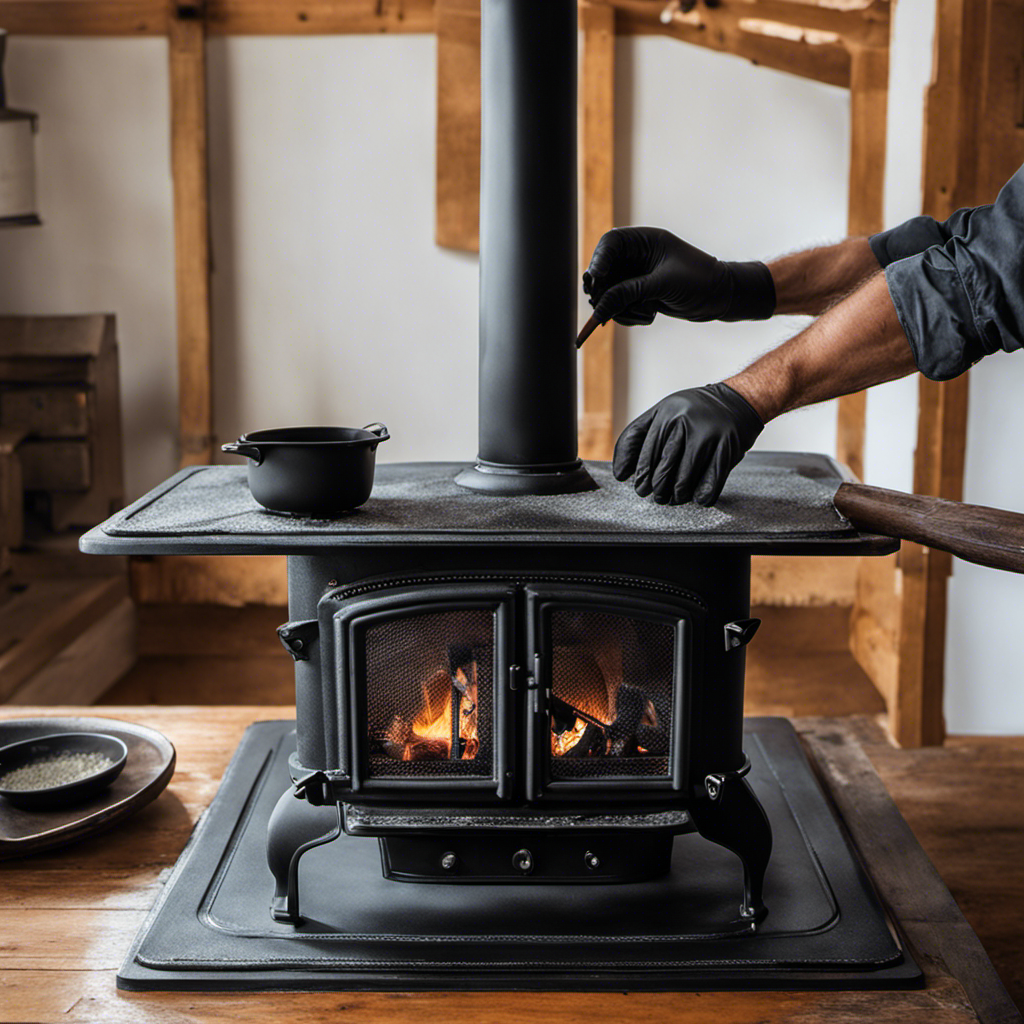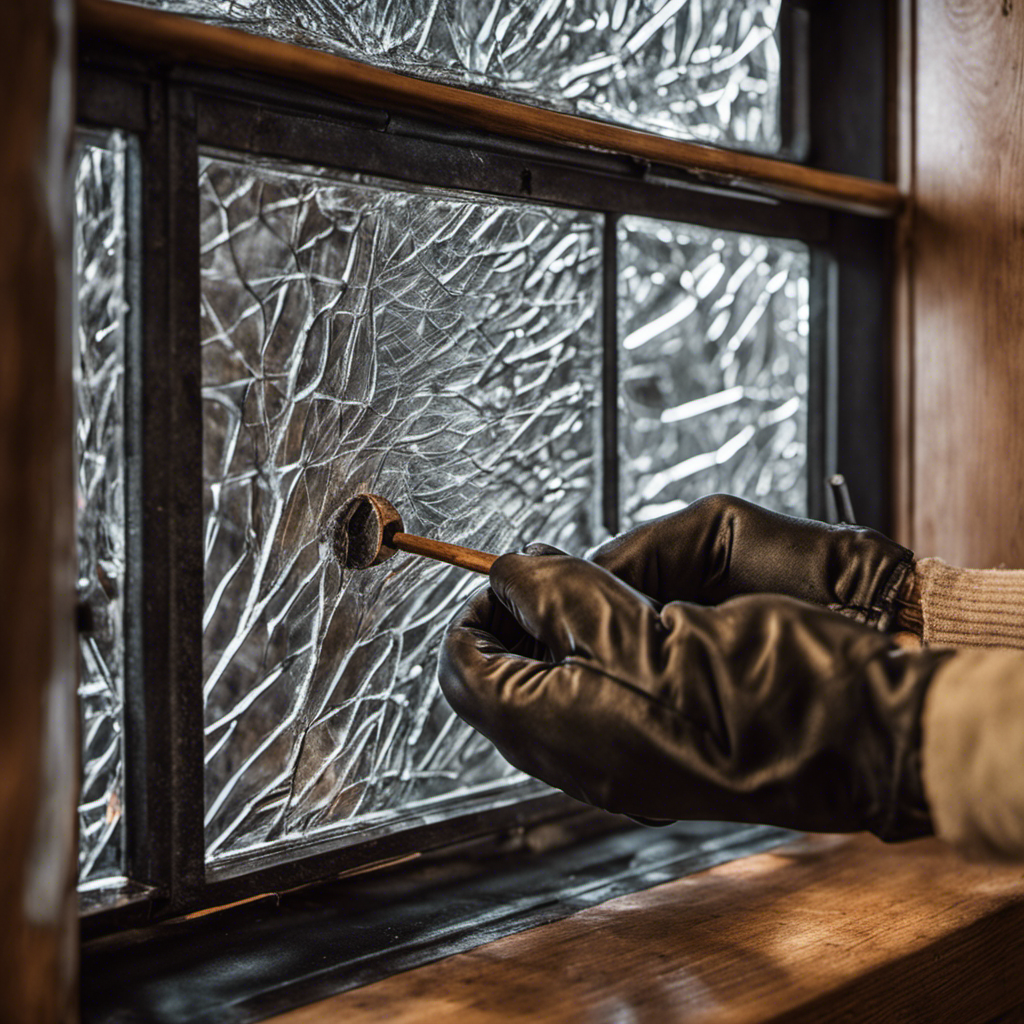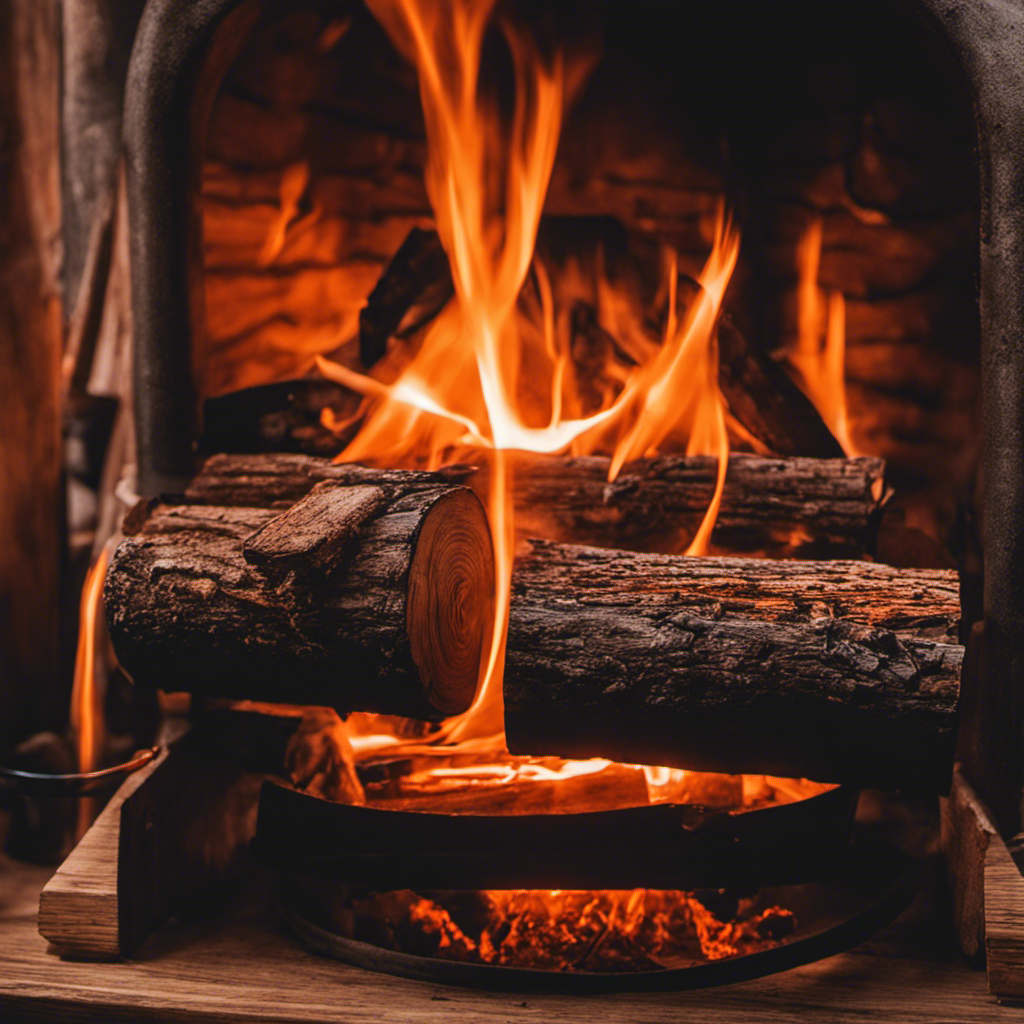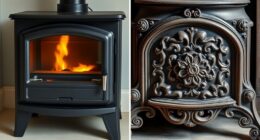I’ve found myself causing more cracks in my cast iron wood stove than I care to admit. Nevertheless, with the right knowledge and tools, fixing these cracks can be easier than one might expect.
In this article, I’ll guide you through the step-by-step process of patching up those pesky cracks in your wood stove. From understanding the causes to assessing the severity and gathering the necessary materials, I’ve got you covered.
Let’s get your wood stove back in working order!
Key Takeaways
- Thermal stress from extreme temperatures can cause cracks in a cast iron wood stove.
- Proper maintenance, including regular cleaning, can prevent weakening of the cast iron and reduce the likelihood of cracks.
- Using the correct type of fuel is important to avoid contributing to cracks in the wood stove.
- Assessing the severity of the crack is crucial in determining the appropriate repair option.
Understanding the Causes of Cast Iron Wood Stove Cracks
I’ve been researching the various factors that contribute to cast iron wood stove cracks. Understanding the causes of these cracks is crucial in preventing them from occurring in the first place.
One of the main causes is thermal stress, which happens when extreme temperatures cause the cast iron to expand and contract rapidly. This constant expansion and contraction can lead to cracks over time.
Another factor is improper maintenance, such as failing to clean the stove regularly or using the wrong type of fuel. These issues can weaken the integrity of the cast iron and make it more prone to cracking.
By addressing these causes and taking preventive measures like proper maintenance and using the correct fuel, you can significantly reduce the likelihood of cracks in your wood stove.
Now, let’s move on to assessing the severity of the crack in your wood stove.
Assessing the Severity of the Crack in Your Wood Stove
To accurately assess the severity of the crack in your wood stove, you should carefully examine it with both a flashlight and a magnifying glass. Evaluating the crack size is crucial in determining the repair options available to you.
As an experienced wood stove enthusiast, I understand the importance of thoroughly inspecting any crack to ensure the safety and functionality of your stove. Begin by examining the crack’s length, width, and depth. Look for any signs of widening or spreading, which could indicate a more serious issue.
Additionally, check for any signs of rust or corrosion around the crack, as this could further compromise the stove’s integrity.
With these details in mind, you can then determine whether the crack can be repaired with a simple patch or if a more extensive repair or replacement is necessary.
Gathering the Necessary Tools and Materials for the Repair
I’ll start by gathering up all the tools and materials needed for the repair, such as a putty knife and high-temperature epoxy. It’s important to have everything ready before starting the repair process.
Here are three essential items you’ll need for fixing a crack in a cast iron wood stove:
-
Putty Knife: This tool is crucial for removing any debris or old sealant from the crack. It helps create a clean surface for the epoxy to adhere to.
-
High-Temperature Epoxy: Choosing the right repair method is essential, and high-temperature epoxy is the go-to solution for fixing cracks in cast iron. It withstands the extreme heat produced by the wood stove and provides a durable, long-lasting repair.
-
Heat-Resistant Gloves: Safety should always be a priority. When handling hot surfaces or materials, heat-resistant gloves are necessary to protect your hands from burns.
Taking precautions for preventing future cracks is equally important. Regular maintenance, such as cleaning and inspecting the stove, can help identify potential issues early on. Additionally, using a heat-resistant sealant around vulnerable areas can help prevent cracks from forming in the future.
Step-by-Step Guide to Patching the Crack in Your Cast Iron Wood Stove
One important step in patching the crack in your cast iron wood stove is to thoroughly clean the area around the crack with a putty knife. This is crucial because any debris or dirt can prevent the repair material from properly adhering to the surface.
Once the area is clean, you can proceed with applying the appropriate repair technique. There are various methods you can use, such as using high-temperature epoxy or welding the crack. Each technique has its own advantages and it’s important to choose the one that suits your situation best.
Additionally, it’s essential to take preventive measures to avoid future cracks. Regularly inspecting the stove for any signs of damage, ensuring proper installation, and using the stove according to the manufacturer’s guidelines can help minimize the risk of cracks.
Tips for Maintaining the Integrity of Your Wood Stove After the Repair
After the repair, I’ll make sure to regularly clean and inspect my wood stove to maintain its integrity.
Here are some tips I’ve learned to prevent cracks in cast iron wood stoves and common mistakes to avoid during wood stove repairs:
-
Use the right fuel: Burning wet or unseasoned wood can cause rapid temperature changes, leading to cracks in the cast iron. Make sure to use dry, well-seasoned wood to prevent this.
-
Avoid over-firing: Excessive heat can cause stress on the cast iron, leading to cracks. Follow the manufacturer’s guidelines for proper operation and avoid overloading the stove with too much wood.
-
Proper maintenance: Regularly clean the stove to remove any ash or debris that can accumulate and cause hot spots. Inspect the stove for any signs of damage, such as cracks or loose parts, and address them promptly to prevent further issues.
Frequently Asked Questions
Can I Use Regular Household Glue to Patch the Crack in My Cast Iron Wood Stove?
Yes, I recommend using a high temperature sealant instead of regular household glue to patch the crack in your cast iron wood stove. It will provide a stronger and more durable repair that can withstand the heat.
How Long Will the Repair Last Before I Need to Patch the Crack Again?
Repair longevity of a crack patch in a cast iron wood stove depends on several factors. With proper maintenance and regular inspections, a well-done repair can last for several years before needing to be patched again.
Can I Continue Using My Wood Stove While the Crack Is Being Repaired?
I wouldn’t recommend using a wood stove with a crack. There are risks involved, such as potential further damage or even a fire hazard. It’s best to address the crack before continuing use.
Are There Any Safety Precautions I Need to Take During the Repair Process?
During the repair process, it’s crucial to prioritize safety precautions. Be aware of potential hazards and take necessary measures such as wearing protective gear, working in a well-ventilated area, and ensuring proper insulation to prevent accidents.
Can I Prevent Cracks From Forming in the Future by Using a Specific Type of Wood or Fuel?
To prevent future cracks in a cast iron wood stove, it’s important to consider wood selection and maintenance practices. Using well-seasoned hardwood and regularly cleaning and inspecting the stove can help minimize the risk of cracks.
Conclusion
Well, congratulations! You’re now equipped with the knowledge and skills to fix that pesky crack in your cast iron wood stove. Who’d have thought that such a seemingly daunting task could be tackled with ease?
Remember, prevention is key, so make sure to maintain the integrity of your wood stove after the repair.
Now go forth and enjoy the warmth of your crack-free stove, all thanks to your newfound expertise. Stay toasty, my friends!











